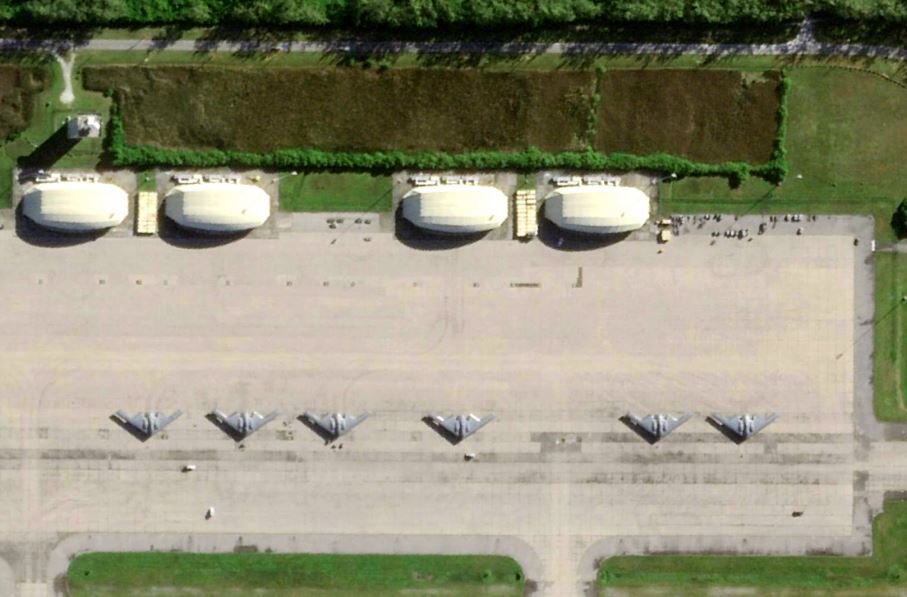
SANAA By all accounts, the United States unleashed its most formidable weapons.
The B-2 Spirit bombers, those trillion-dollar shadows of American might, roared over Yemen in late March 2025, dropping bunker-busting bombs on Ansarallah strongholds with the drama of a Hollywood blockbuster.The mission? Smash their underground lairs, choke their missile supply, and send a warning across the Red Sea to Tehran: cross us, and this is what you get.
But as the dust settles over Sanaas rugged terrain on April 9, 2025, the U.S.
has a problem: its shiniest toys couldnt seal the deal.
And Iran, ever watchful, is jotting down lessons on how to turn Americas military bravado into a fading whisper.Rewind to mid-March.
Operation Rough Rider saw six B-2snearly a third of the fleetstage out of Diego Garcia, their engines humming with promises of precision and power.
The targets? Ansarallah missile complexes, burrowed deep into Yemens unforgiving mountains, a persistent threat to Red Sea shippings destined to dock in Occupied Palestine.
The Pentagon hailed the strikes as a triumph: 65 dead, key sites hit, a general command HQ in Sanaa levelled.
Yet, Ansarallah persistsdowning a third U.S.
MQ-9 Reaper by April 6and continues to defy the superpower that vowed to crush them.The evidence stings.
Satellite images from late March show collapsed tunnel entrances, yes, but Ansarallah didnt flinchthey carved new ones.
Those GBU-57 Massive Ordnance Penetrators, built to slice through earth like a hot blade cutting butter, didnt erase the Yemenis subterranean caches.
The White House boasts of over 200 strikes, yet Red Sea cargo traffic languishes at 70% below late 2023 levels.
The U.S.
and its allies brand Ansarallah as rebels for their disruption of trade flows to Israel, a stand taken in solidarity with the Palestinian people.
But labels aside, the Yemenis remain unbowed, their ties with allies unbroken, their resolve a glaring sign that Americas best shot misfired.Shift to Tehran, where the leadership is likely smirking over their chai.
The takeaway is stark: the U.S.
military threat, for all its high-tech swagger, isnt the unstoppable force it claims to be.
If Ansarallahoutmatched in resources but not in spiritcan endure the B-2 onslaught, whats to stop Iran from brushing off Americas warnings? Irans own underground complexes, from Natanz to Fordow, outstrip Yemens in depth and design.
If the U.S.
cant crack Ansarallahs tunnels, Tehrans strategists must figure they can neutralize the danger with fortified bunkers, smarter defences, and a page from Yemens playbook.This isnt just Yemens storyits a glimpse of the Persian Gulfs next chapter.
The B-2 strikes aimed to deter Iran through its Yemeni allies, a show of muscle to keep Tehran in line.
Instead, theyve gifted Iran evidence that American airpower, even at its zenith, can be thwarted by ingenuity and terrain.
Ansarallahs endurance200 strikes weathered, U.S.
warships still harassedhints Iran could fare even better, bolstered by its ballistic missiles and regional alliances.
The U.S.
faces a hard truth: its military menace might ring hollow when push comes to shove.Here we are, the Red Sea still a battleground, Ansarallah still standing tall.
The B-2s may have retreated, but their legacy lingersa tale of ambition outpacing results.
For Washington, its a bitter draught: even its arsenals crown jewels couldnt subdue a determined force in Yemens hinterlands.
For Iran, its an invitation to dig deeper, knowing the U.S.
threat can be dodged, outlasted, defeated, and defied.
The stealth bombers came, they saw, they bombedbut victory? Thats still buried in the tunnels, beyond reach.

 8
8






